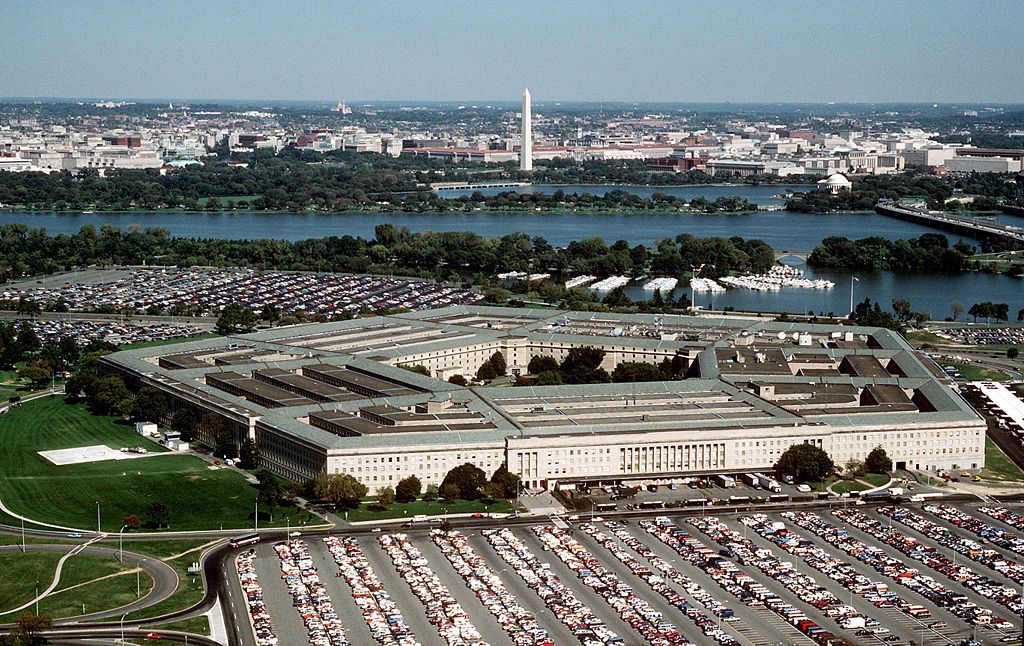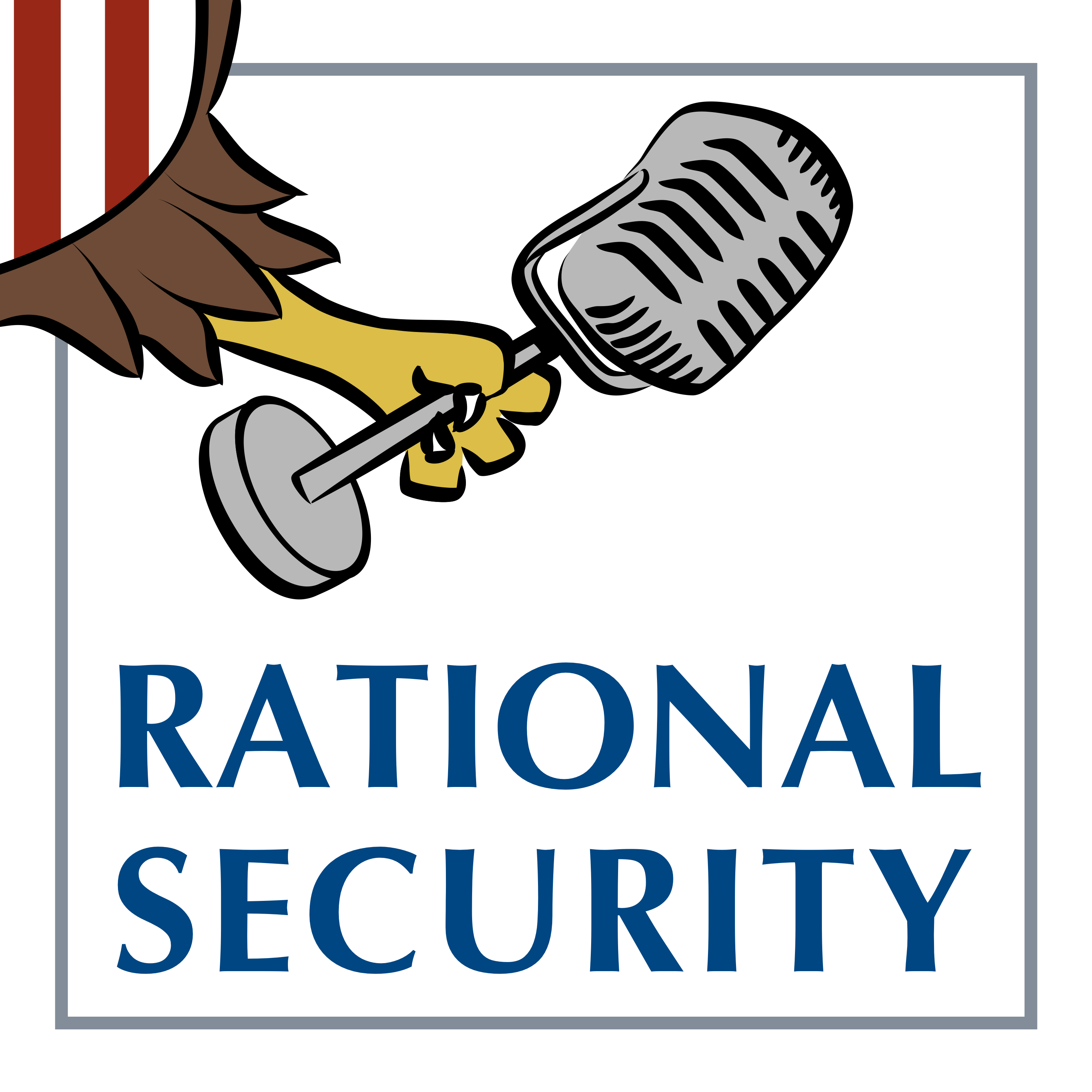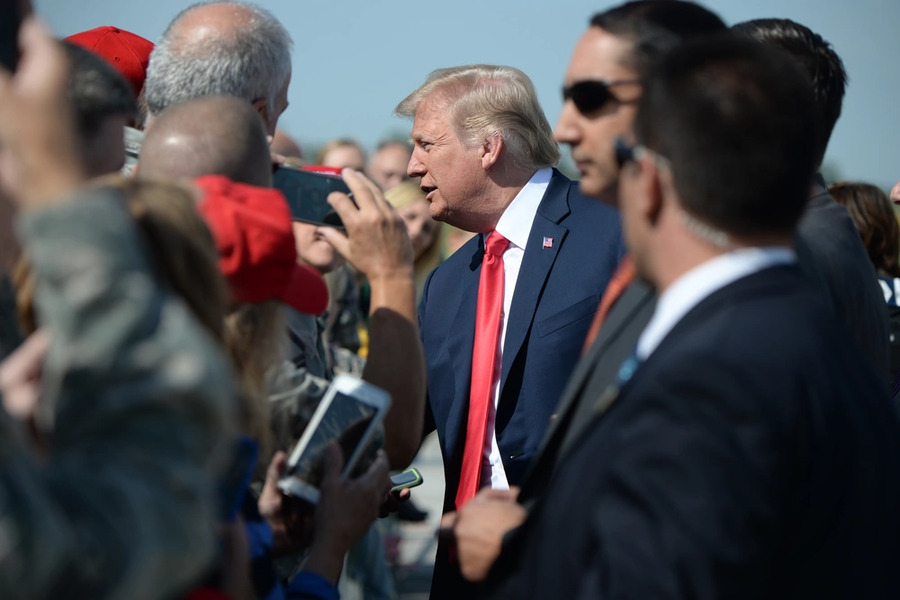What the FY 2022 NDAA Does, and Does Not Do, to Military Justice
The President just signed the FY 2022 NDAA bill after contentious debate throughout Congress. But what reforms does it actually make (and what does it not change at all)?

Published by The Lawfare Institute
in Cooperation With

Editor’s note: An earlier version of this essay was posted, on Dec. 15, 2021, as an executive summary on CAAFLog, where Lt. Col. Maurer serves as an editor in his personal capacity. This essay reflects his own opinions and not the official position or policies of any part of the U.S. government.
On Dec. 15, the Senate passed the National Defense Authorization Act (NDAA) for Fiscal Year 2022 by a vote of 88-11, sending the bill (which the House approved the week before by a margin of 363-70). President Biden signed the bill into law on Dec. 27.
Notably, the military justice portions of the final bill reflect a contentious compromise following competing versions that developed over the last year in the House and Senate. Conflict over the bill generated an intense amount of press coverage, a reactionary (but meant to be curative) Department of Defense “Independent Review Commission,” no small amount of opinion writing and greater than typical congressional interest in this part of Title 10. The various proposals were distinguished by—primarily—how much discretionary court-martial disciplinary authority would be removed from commanders (Would it be for some types of crime, like sexual assault, or for all “felonies” or “major crimes?”) and what kind of authority would fill the vacuum (Would it be some type of military or civilian independent prosecutorial office answering to senior civilian officials in the Pentagon rather than a disaggregated population of senior commanding officers?). In both respects, the NDAA’s reform departs unequivocally from the historical and constitutionally validated American practice that has been followed for more than two centuries, long justified by claims of senior military officials. But whenever a large institution’s internal practice is changed from the outside, it is important for those practitioners to maintain a sense of perspective. In this case, proper perspective includes acknowledging not only what the law does do but also what it does not change at all.
Among other authorizations, the new law will affect the Uniform Code of Military Justice (UCMJ) in the following important ways:
● The act creates a novel independent Office of the Special Trial Counsel for each service (Army, Navy, Marine Corps, Air Force and Space Force) except the Coast Guard, reporting directly to the civilian secretary of that service, not to the judge advocate general or chief of staff of that service. The judge advocate general, however, selects special trial counsel (STCs) (who are necessarily judge advocate officers, not civilian prosecutors) based on qualifications akin to those expected of panel members chosen by a court-martial convening authority under Article 25 of the UCMJ (“education, training, experience, temperament”). There will be a senior lead special trial counsel for each service who will be a judge advocate in the grade of at least O-7 (brigadier general or rear admiral (lower half)).
● This STC will have “exclusive authority” to do several things only a commander with court-martial convening authority could do before:
- To determine which reported offenses are “covered offenses” and thus subject to his or her discretion.
- To withdraw or dismiss charges of a covered offense.
- To refer the covered offense charges to a court-martial.
- To enter into plea agreements with the accused.
Notably, the STC will have this exclusive authority over the covered offense and “related” offenses, as well as “any other offense” alleged to have been committed by the accused. For example, the STC would have prosecutorial authority over a soldier accused of sexual assault (Article 120) and extramarital sexual conduct (Article 134) related to the same incident, as well as any alleged martial deficiencies and offenses, such as dereliction of duty (Article 92) or willfully disobeying a superior commissioned officer (Article 90) even if the latter offenses occurred before or after, or were located nowhere near, the alleged Article 120 and Article 134 offenses.
● The act defines “covered offenses” as wrongful broadcast or distribution of intimate visual images (Article 117a); murder (Article 118); manslaughter (Article 119); rape and sexual assault, including of children, and certain other types of “sexual misconduct” (Articles 120, 120b, 120c); kidnapping (Article 125); domestic violence (Article 128b); stalking (Article 130); retaliation (Article 132); and producing, processing, receiving, viewing and distributing child pornography (Article 134); as well as conspiring to, attempting or soliciting any of the above (Articles 80, 81, 82).
If the STC declines to prefer or refer a charge for a “covered offense,” the convening authority may still take other regularly authorized actions regarding that allegation, except for referring it to a special or general court-martial:
● The STC has the authority to detail “regular” trial counsel, presumably from the Office of the Staff Judge Advocate at the installation where the accused was stationed, to assist in the prosecution of the case.
● The STC’s decision to refer a case to a special or general court-martial shall be in writing, and essentially detail the same determinations currently made by a staff judge advocate prior to referral under Article 34 of the UCMJ (each specification alleges an offense under the code, probable cause exists to believe the accused committed the offense and the court-martial would have jurisdiction over the accused).
● The act makes sexual harassment a new UCMJ offense, but only under Article 134. This means such behavior (also defined by this act) is not criminalizable conduct unless the sexual harassment is, under the case-by-case circumstances, “of a nature to bring discredit upon the armed forces” and/or is “prejudicial to good order and discipline.” Both of these elements are highly fact-dependent and, in the latter case, must have a “direct and palpable” negative effect on something clearly germane to military readiness or mission accomplishment.
● Military judges, not panels, will now make the sentence determination for all noncapital convictions, regardless of type of offense, at special and general courts-martial.
● Sentencing determinations are to be made within certain new “sentencing parameters;” a judge may depart from the parameters if he or she includes the factual basis and reason for that departure in writing in the record of trial. The sentencing parameters, as well as “sentencing criteria,” shall be prescribed by the president, based on recommendations devised by a newly established Military Sentencing Parameters and Review Board reporting to the secretary of defense. These parameters, having the same purpose as the federal sentencing guidelines, must be prescribed within two years of this section’s enactment.
● Finally, Article 133’s “conduct unbecoming an officer and a gentleman” offense is revised to strike “and a gentleman.” It took only 70 years.
These provisions related to the new STCs go into effect two years from the bill’s enactment and will be related to misconduct allegedly committed after that effective date. But this comes with an interesting caveat: The president must prescribe regulations that put into effect these reforms within two years of enactment; if the president fails to do so, these changes become effective only on the date the regulations are actually prescribed.
In a unique authorization, reversing current practice, “commanders of the victim and the accused in a case involving a covered offense shall have the opportunity to provide input to the special trial counsel regarding case disposition, but that the input is not binding on the special trial counsel.” So, where senior staff judge advocates once gave advice to the court-martial convening authority prior to a binding referral decision by that commander, now the commander may provide advice to the senior judge advocate serving as the STC before that judge advocate refers a “covered offense” to a court-martial.
And, in another twist, all other listed Article 134 offenses are defined by the president in the Manual for Courts-Martial. That is, the factual elements that must be proved beyond a reasonable doubt are determined and prescribed by executive order for such offenses. Congress, however, has defined the specific elements for the new sexual harassment offense and requires the president to revise the manual accordingly.
It remains to be seen whether this reform to military justice will meet expectations, including those of President Biden—who said this would be among the “most significant reforms to our military undertaken in recent history”—or be remembered instead as “hobbling” a military commander’s ability to discipline troops, leading to what some commentators consider to be a regrettable, preventable, natural and foreseeable consequence: degraded national security. As one retired general put it:
Depriving commanders of the ability to send serious criminal cases to a court-martial undermines their ability and responsibility to enforce good order and discipline, which in turn erodes their ability to fight and win wars. There is no evidence to suggest that this change would address the very real issue of sexual assault or other crime in the military. Instead, it would likely make matters worse.
To be fair, a slippery slope argument (based on conjecture and personal anecdotal experience alone) must be acknowledged when it is made. No actual evidence—beyond the “trust us” assertions about “good order and discipline” made by senior uniformed officers during testimony—has been offered to prove that the reform will “likely make matters worse” or will “in turn erode [commanders’] ability to fight and win wars.” In fact, empirical evidence from other modern militaries with similar limitations on commanders’ prosecutorial power suggests the opposite.
The NDAA is, however, a significantly different bill than that proposed by UCMJ reform’s most ardent protagonist, Sen. Kirsten Gillibrand (D-NY), who was clearly disappointed by the modifications negotiated “behind closed doors” as the NDAA drafts were being hammered out by the Armed Services committees. There are some changes——consistent with the ongoing “civilianization” of the military criminal justice system—that could have been enacted but were not. For example, guilty verdicts may still be made by a less-than-unanimous panel, even though the Supreme Court declared last year that such verdicts are unconstitutional in state and federal courts alike.
It is misleading to suggest that commanders at all echelons have lost the better part of their prosecutorial power designed to foster good order and discipline and thus increase the job performance reliability of those in the Armed Forces. To wit, the NDAA’s reform does nothing to change several of the commanders’ (at various levels) current abilities.
For commanders at all echelons, from junior company or battery commanders to fleet admirals, this reform does not change their ability to investigate relatively minor misconduct, especially that of a “martial” character.
For commanders at all levels, the NDAA does not limit the ability to:
● Authorize a “search” and/or “seizure” for potential evidence, based on an independent and neutral probable cause determination, without seeking an authorization from a military magistrate.
● Make recommendations on how to dispose of a matter to a commander higher in the chain of command.
Commanders with court-martial convening authority can still:
● Place soldiers in pretrial restraint or confinement.
● Determine whether to charge, refer to court-martial, pursue nonjudicial punishment under the provisions of Article 15 of the UCMJ, impose administrative corrective measures, or do nothing at all for allegations of all the non-“covered offenses” (and there are nearly 100 such offenses, ranging from typical martial misconduct like disobeying an order, fraternization, being absent without leave (AWOL), malingering, and misbehavior before the enemy, to conventional “civilian”-type major felonies, like forgery, use and distribution of controlled substances, rioting, larceny, robbery, bribery, extortion, assault, burglary, and arson)
● Withdraw and dismiss charges for any reason before findings (for the multitude of non-“covered” offenses).
● Approve or modify findings (guilty or not guilty) and sentences (punishment) in limited scenarios.
● Defer or suspend portions of a sentence for certain offenses.
● Grant limited forms of clemency after a conviction and sentencing.
Finally, commanders and UCMJ-designated civilian officials (e.g., the president, secretaries of the services) with general court-martial convening authority retain the ability to:
● Determine who will be assigned to serve on court-martial panels.
● Provide immunity for testimony in cases of non-“covered” offenses.
● Approve plea agreements for non-“covered” offenses.
● Order pretrial inquiries into a suspect’s mental capacity and mental responsibility.
What should be obvious from these nonexhaustive lists is that commanding officers below the rank of major general or rear admiral (upper half), where general court-martial convening authority usually begins, have not lost any relevant and valuable authority to investigate, mitigate, resolve, and discipline most forms of misconduct, in a way that might affect troops’ morale, cohesion, readiness for duty or military effectiveness. Moreover, the forms of misconduct that have been removed from the commanding officers’ purview (the “covered” offenses) are of notably exceptional legal and factual complexity and do not directly or necessarily implicate the commanders’ ability to do what Congress demands, by law, of military leaders, including exemplifying “virtue, honor, patriotism, and subordination,” inspecting the conduct and disciplining misconduct of those under their command and taking all measures necessary “to promote and safeguard the morale, the physical well-being, and the general welfare of the officers and enlisted persons under their command or charge.”
Nor do these reforms directly or necessarily imperil the commanders’ ability to do what the president as commander in chief demands of military leaders: “to promote justice, to assist in maintaining good order and discipline in the armed forces, [and] to promote efficiency and effectiveness in the military establishment,” and make prosecutorial decisions in a “reasoned and structured manner, consistent with the principle of fair and evenhanded administration of the law” while still “protecting the civil rights of Service members” (per the Manual for Courts-Martial’s “non-binding disposition guidance”). In fact, the reforms could arguably “contribute to the effective utilization of the Government’s law enforcement and prosecutorial resources.”
Moreover, these reforms take place in a constitutional context in which the U.S. Supreme Court (a) defers to the rational judgment of Congress when it enacts “rules for the government and regulation” of the armed forces; (b) recognizes that military justice has evolved to satisfy certain operational demands implicit in providing national defense and concerns only a “specialized community” of professionals; and which (c) now states the primary purpose of this military justice system is to effectuate “justice,” not the commander’s need for well-ordered subordinates—which it considers incidental to the main effort, analogous to civilian systems of justice.
In sum, the most significant changes wrought by the 2022 NDAA only shift the burden of prosecutorial judgment from certain flag officers in command to actual experienced and specialized prosecutors, who also happen to be in uniform and who swear the same oath to protect and defend the Constitution. These judge advocates, in addition, may consider the advice and recommendations of those very commanders whose troops were impacted, one way or another, by a certain limited menu of offenses they no longer have the discretion to address personally. Finally, the transfer of this burden is a foreseeable next step along the decades-long arc of “de-militarizing” military justice, not just in the U. S. but all over the world. This civilianization has happened in all the key and essential matters of due process and civil rights enjoyed by civilians facing criminal charges and punishment by the state. There is little reason to think that this arc will not continue. As this post reveals, there remains a host of prosecutorial and judicial-like powers that may, ultimately, cede to uniformed lawyers or civilian courts. This NDAA reform—as compromise-ridden as the final bill ultimately became—proves that the executive branch has not yet justified sufficiently the continuing relevance and necessity of these powers on principled grounds, to the satisfaction of Congress.

-2025.jpg?sfvrsn=333295e6_3)



